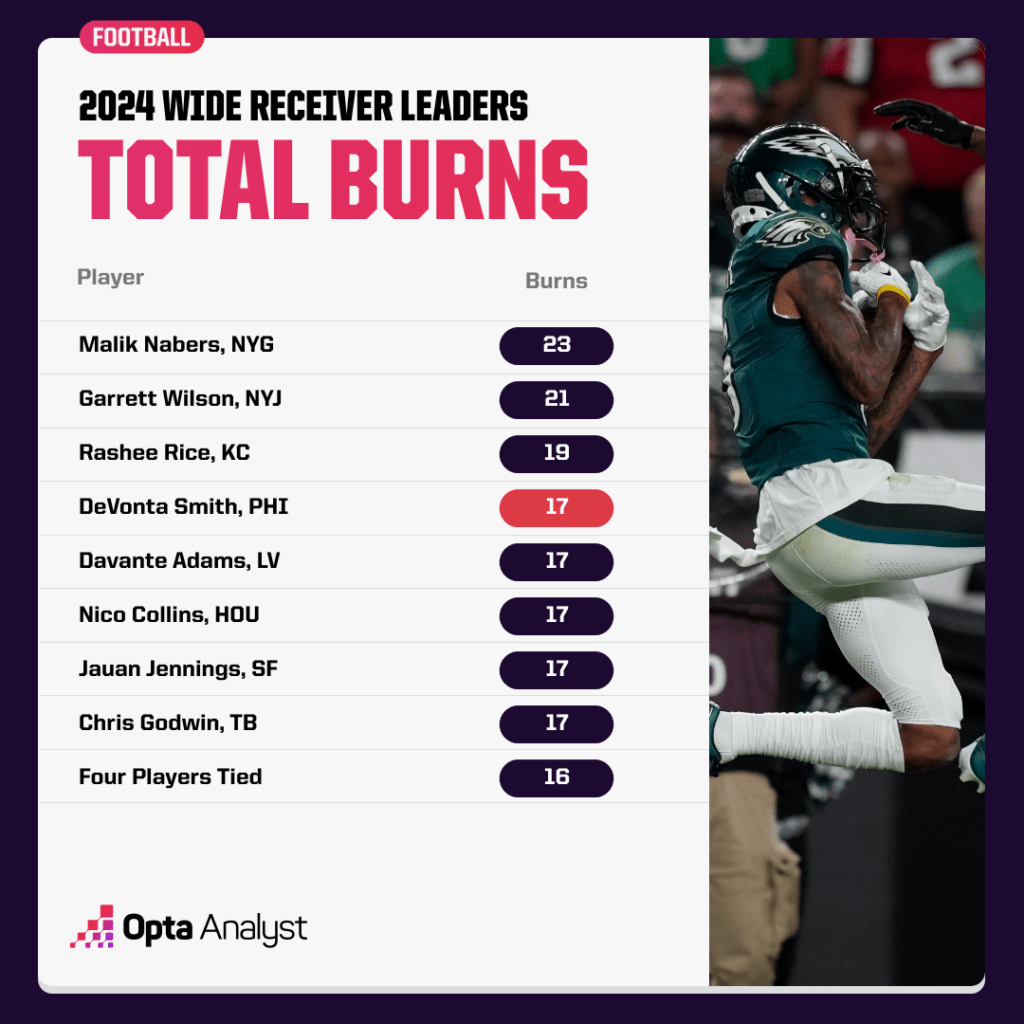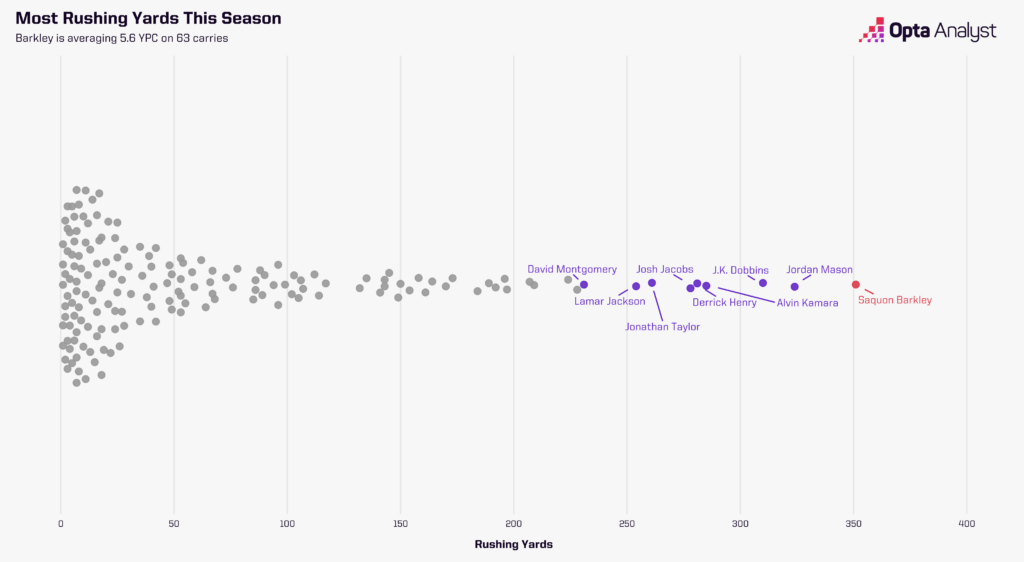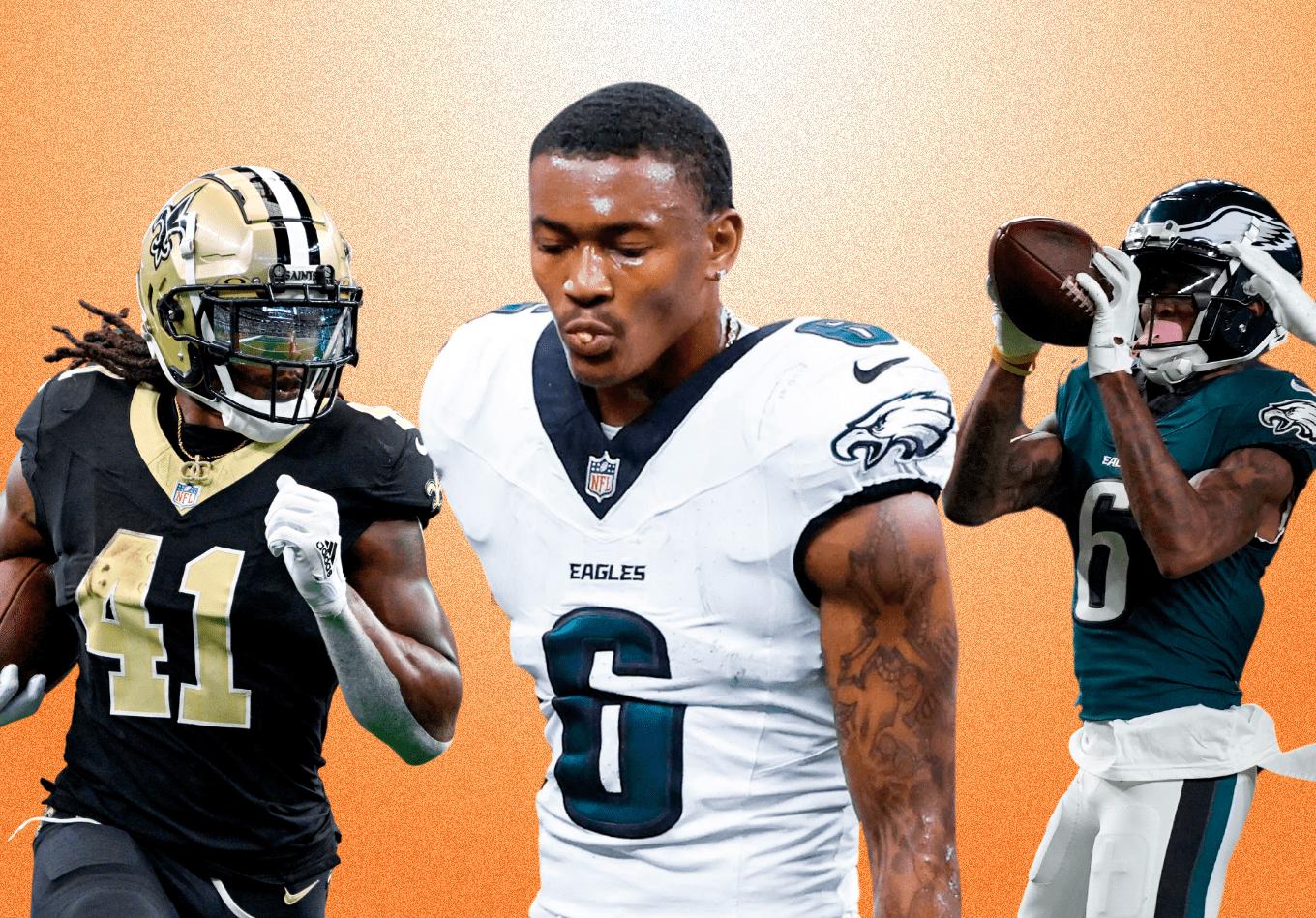How big of a deal is the DeVonta Smith injury for the Eagles? We examine that and what happened to the Saints’ red-hot start in Week 3.
Though “Bountygate” took place more than a decade ago now, the New Orleans Saints’ ugly hit on wide receiver DeVonta Smith on Sunday sparked memories of a time when they had an unsavory reputation on defense.
Saints defensive tackle Khristian Boyd delivered a massive blow from behind on a defenseless Smith in the third quarter of the Philadelphia Eagles’ 15-12 win. He had been corralled and being knocked backward on the play, which had no flags thrown.
The Eagles WR’s helmet was knocked off and he remained on the ground for several minutes while his teammates gathered around him before he was finally able to get up and go to the locker room.
According to reports, Smith suffered a concussion, and his status is uncertain for Week 4 when Philadelphia (2-1) visits the Tampa Bay Buccaneers (2-1) in a matchup of NFC playoff hopefuls.
“Ya’ll obviously saw that forward progression was stopped,” former Saints defensive back C.J. Gardner-Johnson told reporters postgame. “They’re going to take a cheap shot on one of our key players, it goes to show you what type of team that is: They’re frontrunners.”
If Smith has to miss time, it would be a tremendous setback for a quarterback who is having his share of struggles and an offense that is already missing star A.J. Brown (hamstring injury).
Backup wideout Britain Covey also went down Sunday with a shoulder issue, as did standout right tackle Lane Johnson after sustaining a concussion of his own.
We’ll have to wait for more injury updates to know more, but how big a loss would Smith be for the Eagles? He’s been quarterback Jalen Hurts’ most trusted target, sitting in a tie for fifth in the league with 9.3 targets per game and eighth in receiving yards per game with 79.7. He’s also the only player in the league with at least seven catches in each of the first three games.
Smith is tied for fourth in the NFL in burns (17) and 12th in catch rating (.977) entering Week 4. A burn is when a receiver “wins” his matchup on a play that he is targeted, regardless of the pass, while catch rating is on a 0-1 scale that indicates how well a WR successfully catches throws that are considered catchable.

So no matter how you look at it, Smith has been one of the bright spots on a banged-up offense that ranks 18th in the league in passing success rate (58.9%). But they’d still be 3-0 if not for a fourth-quarter hiccup against the Atlanta Falcons on ESPN’s Monday Night Football in Week 2.
If Brown and Smith can’t go against the Buccaneers, Philly may have to lean on Dallas Goedert even more in the passing game. After ranking below the league average (54.5%) among tight ends with at least six targets with a 44.4% burn rate after two games, Goedert stepped up with a career-high 10 catches for 170 yards against the Saints.
In Week 3, Goedert racked up seven burns, which was second only to Cole Kmet of the Chicago Bears, and a league-high 17.6 burn yards per target among tight ends with at least three targets heading into Monday Night Football.
It also means there might be even more pressure on Hurts, who ranks third in the league in well-thrown percentage (92.5) and seventh in scramble yards per carry (7.93). However, he’s also thrown the ball into dangerous situations too often with the ninth-worst pickable pass percentage (6.45) among those with at least 30 adjusted attempts.
Hurts has thrown an interception in seven consecutive games going back to last season, totaling nine over that stretch. That’s tied with Sam Howell for the longest active streak in the NFL.
Saquon Barkley is probably the best choice for focal point of Nick Sirianni’s offense. He leads the NFL in rushing (351 yards), ranks second in carries (63) and looked up to the challenge on Sunday when he ran for 147 yards and two touchdowns on 17 carries (8.6 yards per rush).

Barkley has already hit the 100-yard mark on the ground twice in three games after only reaching it once all last season with the New York Giants.
And this might now be his offense in Year 1 in Philly.
What Happened to the Saints?
On the Saints’ side, fans were treated to a poor offensive performance after 40-plus point outbursts in the two weeks prior.
In those first two games, the Saints were successful running the ball with Alvin Kamara, who averaged 3.9 yards per carry before contact (ninth in the league among those with at least 10 carries) despite facing defensive boxes that outnumbered blockers on 50% of his snaps.
This would seem like a recipe for success against what was a bend-don’t-break Eagles defense that had especially struggled against the run, allowing a league worst 6.9 yards per run play through the first two games.
So what changed?
The offensive line’s success creating holes didn’t continue in Week 3. That’s partly because starting center Erik McCoy was injured on the third play of the game, forcing Lucas Patrick to shift to center and backup guard Oli Udoh into action.
The rest of the line didn’t create the same type of push, resulting in Kamara’s average yards per carry before contact decreasing to 2.1 – a full 1.8 yards lower than his average from the previous two weeks.
The Eagles didn’t attack the Saints with the same types of defensive boxes as the Dallas Cowboys and Carolina Panthers, instead opting to trust their front seven (and sometimes six) to stop the run, only showing defensive boxes outnumbering blockers on 27% of snaps. That allowed them to limit the Saints’ explosive plays in the passing game that have been vital to their success.
Expect other teams to follow the Eagles’ blueprint for slowing the Saints (2-1), starting with next week’s road date against the Falcons (1-2).
Be sure to check out our MLB, NBA, NFL and college football coverage. And follow us on X and Instagram for more!
